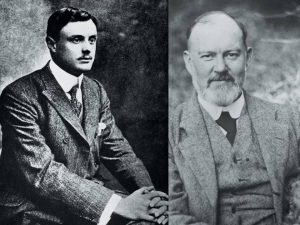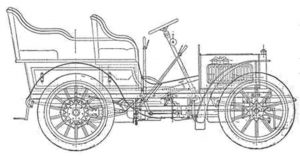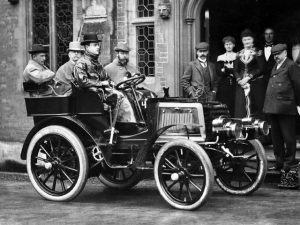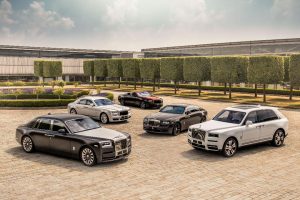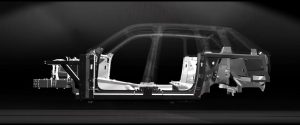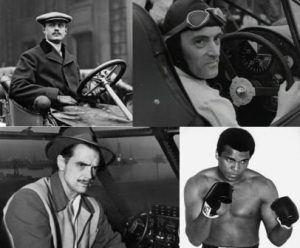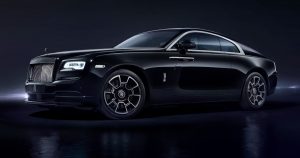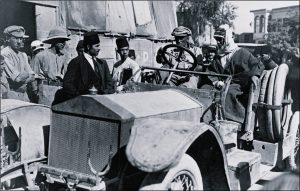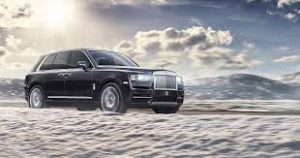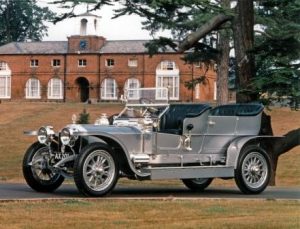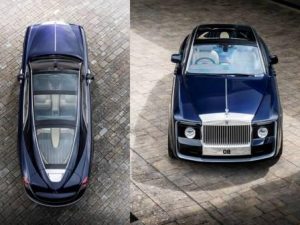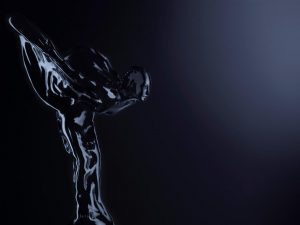On May 4, 1904, Charles Rolls and Henry Royce met for the first time at The Midland Hotel in Manchester, England. It was an encounter that will change the course of automotive history. Henry Royce started an electrical and mechanical business in 1884 and made his first motor car, a two-cylinder Royce 10, in his Manchester factory in 1904. Charles Rolls was the proprietor of C.S. Rolls & Company in Fulham, an early motor car dealership. Rolls was impressed with the Royce 10 and agreed to take all the cars Royce could make. The two gentlemen agreed to badged their products as “Rolls-Royce” motor cars that will be sold exclusively by Rolls. The first motor car under their partnership, the Rolls-Royce 10 HP, was unveiled at the Paris Auto Salon in December 1904.
Exactly 115 years later, the marque Sir Charles Rolls and Sir Henry Royce agreed to form on that fateful day continues to set global standards for innovation and excellence and uphold their legacy as the originators of the “Best Car in the World“. Both gentlemen would undoubtedly be astonished at the modern Rolls-Royce vehicles produced today, especially with the new materials, technology and manufacturing methods that transformed the automotive industry more than a century after the debut of their first 10 HP two-cylinder motor car. Despite the numerous changes, Rolls-Royce Motor Cars retains unbroken links to those pioneering days in certain key areas. The company’s approach, instincts and values would be immediately and pleasingly recognizable to its founding fathers.
The Architecture of Luxury
In its first years from 1904-1906, Rolls-Royce produced four models – the £395 10 HP two-cylinder, £500 15 HP three-cylinder, £650 20 HP four-cylinder, and £890 30 HP six-cylinder – and sold a mere ten cars. In 2018, it delivered 4,107 motor vehicles – the highest annual total in its history – to customers in over 50 countries.
To satisfy global demand for its products, the company has developed a common platform that underpins all new models. Known as The Architecture of Luxury, it comprises an aluminium space frame that can be scaled to fit different applications by using different-sized floor pans and cross members. Rolls-Royce Motor Car’s new production processes ensure stiffness and integrity while delivering the marque’s signature Magic Carpet Ride.
Black Badge
Black Badge is Rolls-Royce’s response to a small and select group of clients who have asked the marque for motor cars with specific, focused characteristics that reflect their different take on life, success and the luxury they consume. These people choose to define themselves differently from their wider social group; a subset within a subset. For over a century such individuals, possessed of a dark and restless spirit, have been drawn to Rolls-Royce’s unique allure. Luminaries including Sir Malcolm Campbell, Howard Hughes and Muhammad Ali have all shared the marque’s founding philosophy; an uncompromising refusal to accept the status quo and a constant yearn to innovate, create and advance. Their restless spirit was also shared by the marque’s co-founder, Charles Rolls, himself one of the great disrupters of his day. His appetite for advancement and adventure included a passion for aircraft that would ultimately lead to his untimely demise at only 33 years.
It is this indomitable spirit that, since the launch of Black Badge, has captivated so many of today’s young owners, who are drawn to Rolls-Royce in the knowledge that no other luxury house is possessed of the vision and flexibility to meet their demands both in design and engineering terms. Indeed, Black Badge serves to amplify the inherent characteristics that have driven so many new, younger patrons of luxury to the marque. In conceiving Black Badge versions of Wraith, Ghost and Dawn, the marque’s Bespoke designers and engineers drew upon their instinctive understanding of the unique lives of these extraordinary men and women to create both design and engineering treatments that perfectly amplify the inherent values of these great Rolls-Royce motor cars. Black Badge models are the “alter egos” of the standard models: darker, edgier, with more power and torque and enhanced driving dynamics to open up the Rolls-Royce brand to new audiences. Styling details include a dark-chrome Spirit of Ecstasy, wheels and carbon-fiber interior components, plus the “inverted” black-on-silver RR logo. As with every other Rolls-Royce, customers can add whatever Bespoke elements they wish, so even a Black Badge car can be any color you desire.
Effortless, Everywhere
In July 1917, a British diplomat, Hugh Lloyd-Thomas, was dining in a Cairo club with his wife, Aileen, when a man in flowing robes swept in and demanded,“Whose Rolls-Royce is this outside?” When Aileen said it was hers, the man announced that he was commandeering it “in the name of His Majesty’s armed forces” and drove away. The man was Thomas Edward “T.E.” Lawrence, who’s more familiar to millions as Lawrence of Arabia. Both he and the car would be immortalized in one of the most famous photographs of the First World War.
A century after Lawrence’s exploits, Rolls-Royce once again produced a car capable of conquering the most hostile environments on earth – the Cullinan super-luxury SUV. Launched in 2018, the Cullinan was engineered from scratch to enable customers to go anywhere, see anything, and do everything they desire with total confidence, while cocooned in the comfort and splendor embodied in the Rolls-Royce name. To prove its all-terrain credentials, the car completed a 12,000-mile odyssey through some of the world’s most challenging terrain including the Scottish Highlands, the Austrian Alps, the American West, and the Middle East, where it effortlessly confirmed Lawrence’s assertion that “a Rolls in the desert is above rubies”.
A Return to Coachbuilding
The lines and styling of the first Rolls-Royce cars are clearly influenced by the horse-drawn carriages they replaced. This is no coincidence since they were handcrafted by the same master coachbuilders, who effortlessly transferred their skills and artistry from the outgoing tradition to the new technology.
Coachbuilding at Rolls-Royce ended in the 1960s but the craft made a triumphant return in 2017 with the “Sweptail” – a fully bespoke, coachbuilt commission for a customer seeking ‘the ultimate grand tourer. The Sweptail is a truly unique creation with a never-to-be-repeated silhouette and individual interior touches, including a champagne cooler specifically proportioned to hold only a bottle of Dom Pérignon ’73. Nevertheless, with its Pantheon grille and rear overhang, it remains absolutely true to the Rolls-Royce brand and design language.
“We are deeply conscious of our heritage: it is a tremendous privilege to be continuing and building on work that began 115 years ago,” says Torsten Müller-Ötvös, Chief Executive of Rolls Royce Motor Cars. “But we also understand that our founders were visionaries, always looking to do things in new and different ways. It’s that spirit of excellence and innovation that Rolls-Royce Motor Cars embodies and celebrates today.”
 Power Wheels Magazine A Notch Above
Power Wheels Magazine A Notch Above

